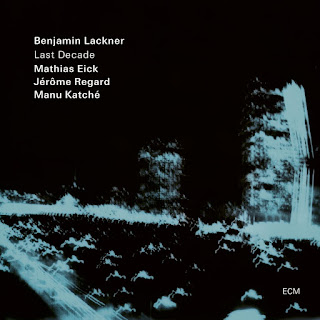Hailing from Portugal and based for the last decade and a half in the Netherlands, Grammy and Latin Grammy Award-nominated vocalist and composer Maria Mendes is no stranger to living between two different worlds. With her critically acclaimed 2019 album Close To Me, Mendes, whose praises have been sung by such legendary composers as Quincy Jones and Hermeto Pascoal, spotlighted her ability to bring disparate influences together in stunning fashion with her vibrant fusion of symphonic jazz and Portuguese Fado, the folk music of her homeland.
Far from having exhausted the possibilities of that project, Mendes brings her singular vision to the concert stage in collaboration with master keyboardist/arranger John Beasley and the revered Metropole Orkest on her breathtaking new live album, Saudade, Colour of Love. Due out October 7, 2022 via Challenge Records, the album further expands the emotional intensity of its predecessor’s thrilling hybrid sound with the backing of a full orchestra. The lush, velvety symphonic sound creates sparks when it meets the exhilarating interplay of Mendes’ brilliant quartet and the singer’s fervent vocals, resulting in an unforgettable evening of music.
The Dutch Metropole Orkest, the world’s leading pop and jazz orchestra, appeared on four tracks on Close To Me, but that was enough to convince Mendes that the collaboration could bear even greater fruit. “Working with the Metropole Orkest was so precious that it nurtured a seed in me that needed a lot more water,” Mendes says. “Bringing together jazz and Fado has been the most important and artistically fulfilling work that I have done, really feeding my soul. It’s been a new awakening to connect with this beautiful legacy that came from my ancestors.”
Not that her Portuguese roots made Mendes’ exploration of Fado inevitable. She had long resisted the music, its mournful, downbeat tone seemingly incompatible with her impassioned approach to song, forged in her operatic training, and in the spirited jazz improvisation that she learned from such formative influences as Carmen McRae, Betty Carter and Shirley Horn. It took leaving home and putting down new roots in as vastly different a locale as the Netherlands to grant Mendes the perspective to discover a wholly original approach to Fado.
While Mendes and Beasley’s arrangement of “Asas Fechadas” garnered nominations for both Grammy and Latin Grammy Awards, the pandemic inevitably halted the album’s momentum. At the same time, it allowed the luxury of time to plan a truly spectacular showcase for expanded orchestral renditions of these songs to be premiered at two May 2022 concerts at Amsterdam’s Muziekgebouw aan’t IJ and at Parkstad Limburg Theaters in Heerlen. Mendes worked closely with John Beasley in arranging the music for the symphonic setting, while Beasley crafted majestic orchestrations for the Metropole Orkest.
“I could not have done this without such a fantastic partner,” Mendes says. ““John is such an eclectic and eager musician.”
One of the highlights on both albums is “Hermeto’s Fado for Maria,” a new piece written for Mendes by the iconic Brazilian composer Hermeto Pascoal. The song was gifted to her in the form of a handwritten score on the back of a hotel room emergency exit instruction card. Pascoal gave Mendes free rein to do what she wished with the song, the only demand being, “Don’t you dare to not record it!”
Mendes and Beasley also prepared three new songs for the new album. Mendes describes “Com Que Voz” as “one of my ultimate Fados, I find it extraordinary. the poetry is divine and existentialist, and I’m really proud of what John and I did to make detours from the original melody and harmony.” The performance that opens Saudade, Colour Of Love lives up to that enthusiasm, opening with lush, elegiac strings behind Mendes’ heartrending vocal, then building to a soaring clarinet solo by the Metropole’s Christof May, spurred on by Cédric Hanriot’s muscular piano work.
“Quando Eu Era Pequenina” is an ancient, popular folkloric song for dancing, typically accompanied by piercing laments by female singers. The dance is abstracted into Mário Costa’s opening drum solo, which establishes an unexpected 7/4 rhythm for the piece. “The song is very well known in Portugal, so I wanted to give it a very faraway twist,” Medes explains. The concert closes with “Meu Pobre Capitão,” a new composition by Mendes and Beasley penned in the spirit of the pair’s Fado reinterpretations and here featuring a buoyant audience singalong.
Through these and the half dozen songs from Close To Me, Mendes gives a truly moving and heartfelt performance, fueled by not only the passionate arrangements but by the two years of silence that preceded it. “I definitely experienced some spiritual growth feeling all the love from the musicians and the audience,” she says. “I felt like a phoenix rising from the ashes.”
From her native Portugal to her adopted home in the Netherlands, Grammy and Latin Grammy-nominated vocalist and composer Maria Mendes has traveled a world of musical expression. Hailed by DownBeat magazine as “a jazz singer of the highest order,” Mendes’ praises have been sung by such legends as Quincy Jones and Hermeto Pascoal. With Wayne Shorter’s blessings, Mendes premiered his contemporary jazz piece “Gaia” in June 2022 in Germany alongside the Bielefeld Philharmonieker, saxophonist Magnus Lindgren and pianist John Beasley. Mendes’ song “Inverso,” featuring Anat Cohen, was featured on the soundtrack of the International Emmy-winning Portuguese soap opera Ouro Verde in 2018. The vocalist has released four striking solo albums, most recently blending symphonic jazz and Portuguese Fado on the acclaimed Close To Me and the stunning live album Saudade, Colour of Love. Mendes’ wealth of influences and experiences help make up what Exclusive magazine called “one of the most engaging, enchanting vocal approaches… that exists today.”





























